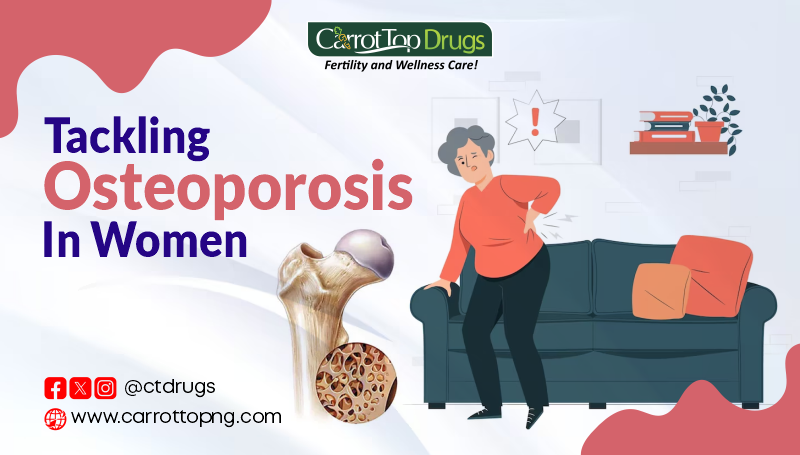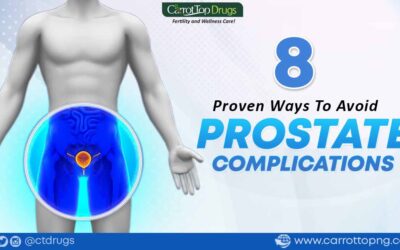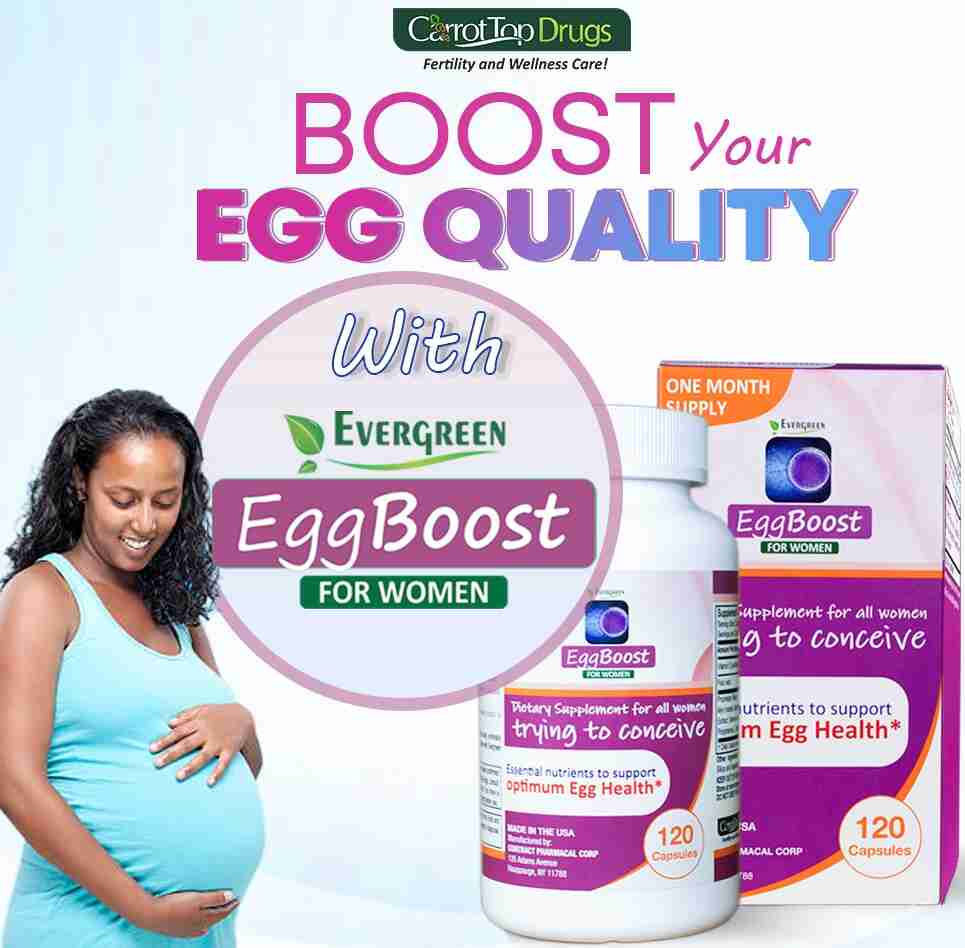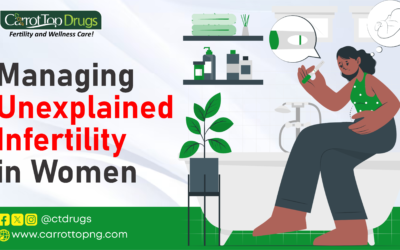Introduction to Osteoporosis
Osteoporosis is a bone disease that leads to decreased bone density and increased fragility, making bones more susceptible to fractures. It often progresses silently without noticeable symptoms until a fracture occurs. In this article, we would reveal the steps in tackling osteoporosis in women,
Definition of Osteoporosis
Osteoporosis is a bone disease that develops when bone mineral density and bone mass decreases or when the structure and strength of bone changes. This can lead to a decrease in bone strength that can increase the risk of fractures.
Incidence of Osteoporosis in Women
Women are more susceptible to osteoporosis due to various factors such as hormonal changes, particularly during menopause, and lower peak bone mass compared to men. According to the Osteoporosis Foundation, worldwide, osteoporosis is estimated to affect 200 million women – approximately one-tenth of women aged 60, one-fifth of women aged 70, two-fifths of women aged 80 and two-thirds of women aged 90. It is said that osteoporosis affects one in three women over the age of 50.
Osteoporosis doesn’t affect only post menopausal women, a research conducted in India by Radha et al., revealed that about 14% of the premenopausal women were also osteoporotic.
Causes of Osteoporosis in Women
Hormonal Changes, Particularly During Menopause:
Hormonal changes, especially during menopause, play a pivotal role in the etiology of osteoporosis in women. The decline in estrogen levels during menopause leads to accelerated bone loss, as estrogen is crucial for maintaining bone density and strength. Addressing hormonal changes is important in tackling osteoporosis in women.
Lower Peak Bone Mass Compared to Men:
Women generally have lower peak bone mass compared to men, which predisposes them to osteoporosis. Peak bone mass, attained during early adulthood, serves as a reservoir of bone strength and resilience. Starting from a lower baseline, women are inherently more susceptible to bone loss and osteoporotic fractures as they age.
Nutritional Deficiencies and Poor Dietary Habits:
Nutritional deficiencies, particularly inadequate intake of calcium and vitamin D, contribute to the development of osteoporosis in women. Calcium is essential for building and maintaining strong bones, while vitamin D facilitates calcium absorption and utilization.
Poor dietary habits, such as excessive consumption of processed foods and low intake of calcium-rich foods, exacerbate the risk of osteoporosis. Tackling osteoporosis in women involves promoting a balanced diet rich in calcium, vitamin D, and other essential nutrients to support bone health.
Sedentary Lifestyle and Lack of Weight-Bearing Exercises:
A sedentary lifestyle and lack of weight-bearing exercises are significant contributors to osteoporosis in women. Weight-bearing exercises, such as walking, jogging, dancing, and strength training, help stimulate bone formation and improve bone density. Conversely, a sedentary lifestyle leads to decreased bone turnover and increased bone loss, further predisposing women to osteoporosis. Encouraging regular physical activity and incorporating weight-bearing exercises into daily routines are essential strategies for tackling osteoporosis in women.
Smoking and Excessive Alcohol Consumption:
Smoking and excessive alcohol consumption are detrimental to bone health and increase the risk of osteoporosis in women. It interferes with calcium absorption and disrupts hormone levels, while excessive alcohol consumption impairs bone formation and increases bone loss. Tackling osteoporosis in women involves smoking cessation.
Certain Medical Conditions and Medications:
Certain medical conditions and medications can also contribute to the development of osteoporosis in women. Conditions such as rheumatoid arthritis, thyroid disorders, and gastrointestinal diseases can interfere with bone metabolism and increase the risk of bone loss.
Similarly, long-term use of medications such as corticosteroids, anticonvulsants, and certain cancer treatments can weaken bones and predispose women to osteoporosis. Managing underlying medical conditions effectively and optimizing medication regimens in collaboration with healthcare providers are essential steps in tackling osteoporosis in women.
Diagnosis of Osteoporosis in Women
Clinical Assessment and Risk Factor Evaluation:
The first step in diagnosing osteoporosis in women involves a comprehensive clinical assessment and evaluation of risk factors. Healthcare providers assess factors such as
- age,
- menopausal status,
- family history of osteoporosis,
- previous fractures,
- smoking history,
- alcohol consumption, and
- medication use to determine an individual’s risk profile for osteoporosis.
Identifying and addressing modifiable risk factors are essential components of tackling osteoporosis in women.
Bone Mineral Density Testing:
Bone mineral density (BMD) testing, commonly performed using dual-energy X-ray absorptiometry (DEXA) scans, is the gold standard for diagnosing osteoporosis in women. DEXA scans measure bone density at various skeletal sites, typically the hip, spine, or forearm, and compare the results to age-matched reference populations to assess bone health. Tackling osteoporosis in women involves early detection through routine BMD testing, enabling timely interventions to prevent fractures and preserve bone health.
Clinical Risk Assessment Tools:
In addition to BMD testing, clinical risk assessment tools such as FRAX (Fracture Risk Assessment Tool) may be utilized to further evaluate an individual’s risk of osteoporotic fractures. FRAX calculates the 10-year probability of major osteoporotic fractures or hip fractures based on clinical risk factors and BMD results. Integrating clinical risk assessment tools into diagnostic protocols is helpful in tackling osteoporosis in women.
Laboratory Tests:
Laboratory tests may be conducted to assess biochemical markers of bone turnover and metabolism, providing additional insights into bone health and identifying underlying conditions contributing to bone loss.
- Serum calcium,
- phosphorus,
- alkaline phosphatase, and
- vitamin D levels are commonly measured to evaluate mineral metabolism and nutritional status.
Addressing any underlying nutritional deficiencies or metabolic abnormalities is integral to tackling osteoporosis in women.
Physical Examination and Fracture Assessment:
A thorough physical examination, including
- evaluation of height loss,
- kyphosis (curvature of the spine), and
- signs of previous fractures, complements the diagnostic workup for osteoporosis in women.
In tackling osteoporosis in women, accessing the above parameters while obtaining a history of previous fractures serves as a significant predictor of future fracture risk.
Treatment Options for Osteoporosis in Women
Lifestyle Modifications:
Lifestyle modifications play a fundamental role in the treatment of osteoporosis in women. Engaging in weight-bearing exercises, such as walking, dancing, and resistance training, helps stimulate bone formation and improve bone density.
Additionally, maintaining a balanced diet rich in calcium and vitamin D is essential for supporting bone health. Tackling osteoporosis in women involves empowering them with knowledge and resources to adopt healthy lifestyle habits that promote bone strength and resilience.
Pharmacological Interventions:
Pharmacological interventions are often necessary to manage osteoporosis effectively in women, especially those at higher risk of fractures. Commonly prescribed medications include bisphosphonates, which inhibit bone resorption and help maintain bone density.
Other options include hormone therapy, selective estrogen receptor modulators (SERMs), and monoclonal antibody therapy, which may be recommended based on individual risk factors and treatment goals. These are helpful in tackling osteoporosis in women.
Calcium and Vitamin D Supplements:
Calcium and vitamin D supplements are integral components of osteoporosis treatment in women, particularly for those with inadequate dietary intake or malabsorption issues. It is essential for bone mineralization, while vitamin D facilitates calcium absorption and utilization.
Supplementing with calcium and vitamin D helps ensure adequate nutrient intake to support bone health and reduce the risk of fractures. Taking supplements like Bone Support helps in tackling osteoporosis in women. involves optimizing calcium and vitamin D levels through supplementation and dietary modifications. Hale and Hearty for Women 50+ is also to provide women with essential nutrients.
Fall Prevention Strategies:
Fall prevention strategies are essential in reducing the risk of fractures in women with osteoporosis. Implementing measures such as removing tripping hazards at home, installing handrails and grab bars, wearing supportive footwear, and participating in balance training programs can help minimize the risk of falls and subsequent fractures. Addressing fall risk factors and promoting safety awareness are crucial aspects of tackling osteoporosis in women and preventing fractures.
Regular Monitoring and Follow-Up:
Regular monitoring and follow-up are essential components of osteoporosis treatment in women to assess treatment efficacy, monitor bone health, and adjust management strategies as needed. Bone mineral density testing and clinical evaluations help track changes in bone density and fracture risk over time, guiding treatment decisions and interventions. Collaborating closely with healthcare providers and adhering to recommended follow-up schedules ensures optimal management of osteoporosis and promotes long-term bone health in women.
Conclusion
In conclusion, tackling osteoporosis in women requires a comprehensive approach encompassing prevention, early detection, and effective management strategies. By addressing underlying risk factors, promoting bone health through lifestyle modifications, and utilizing appropriate treatments and supplements, women can mitigate the impact of osteoporosis and maintain their bone strength and overall well-being.
FAQs
Q. How can women prevent osteoporosis?
- Women can reduce their risk of osteoporosis by maintaining a healthy lifestyle, including regular exercise, adequate calcium and vitamin D intake, and avoiding smoking and excessive alcohol consumption.
Q. At what age should women start screening for osteoporosis?
- Women should discuss osteoporosis screening with their healthcare providers, typically starting around menopausal age or earlier if they have additional risk factors.
Q. Are there any natural remedies for osteoporosis in women?
- While lifestyle modifications and supplements can support bone health, it’s essential to consult with a healthcare professional for personalized recommendations and treatment.
Q. Can osteoporosis be reversed in women?
- While osteoporosis cannot be fully reversed, early intervention and adherence to treatment plans can help slow down bone loss and reduce the risk of fractures.
Q. Are there any specific exercises recommended for women with osteoporosis?
- Weight-bearing exercises, such as walking, dancing, and strength training, are beneficial for improving bone density and overall bone health in women with osteoporosis.

















